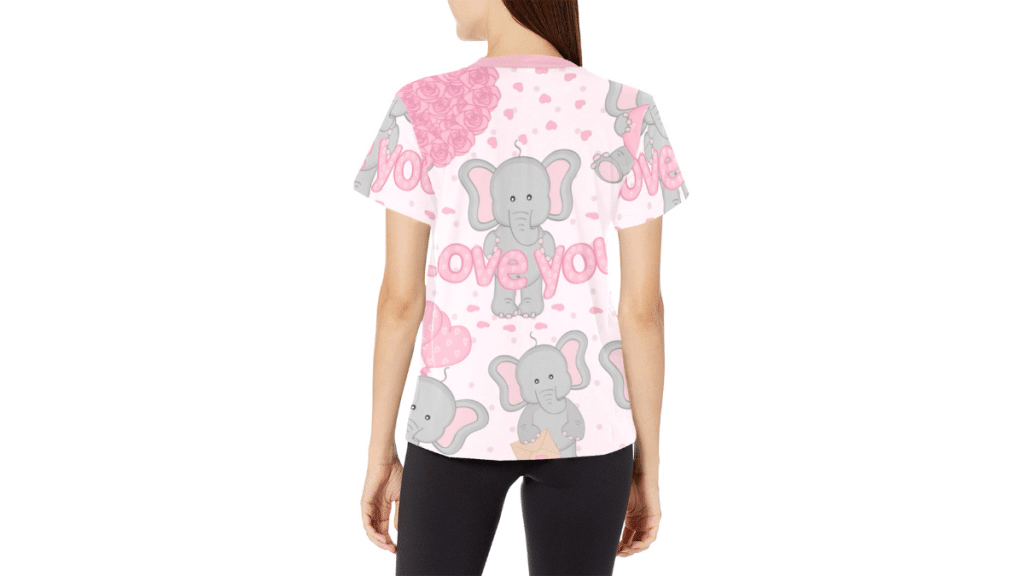The print-on-demand sector has been growing at a shocking rate, reinventing the way entrepreneurs participate in e-commerce. In the critical, constantly evolving e-commerce environment, companies are more accomplished than ever to offer consumers personalized products. In conclusion, they deliver on quality and speed, with which so many firms battle with both customization and maintaining product standards regularly. Often, handling real-time customization applications and keeping product quality standards through multiple suppliers can be overwhelming, even for seasoned entrepreneurs. Platforms like InkedJoy have shown early success in this area depends on three factors: great design instruments, extensive product selection, and strong quality assurance. Follow these easily solved challenges, and you will be better prepared to operate and develop a POD company that delights consumers.
Leveraging Real-Time Design Tools to Enhance Customer Experience
Today, real-time design customization is one of the critical aspects of a print-on-demand business, influencing customer experience and vendor conversion rates. The ability to see the ordered goods on the site and change them as the image of the future purchase is dynamically compared to expectations allows businesses to substantially reduce the return and exchange percentage due to an inconsistent product. Thus, to suit today’s e-commerce requirements, design must be implemented with all the regular features and even more: templates for minimalistic buyers and creativity for professionals. It is vital to find a balance in this matter to provide the client with a high-quality experience without imposing a range of useless design features.
Focus on the features that will contribute to your customers’ ease of use of your design tools. At a minimum, they should include drag-and-drop interfaces, template libraries, and intuitive text adjustment features. Accurate product visualization will require an advanced color management system and high-resolution preview capabilities. With the rise of mobile-first design and shopping, support for smartphones and tablets is no longer an option.

Top Real-Time Design Platforms for Print on Demand
Design platforms are mainly distinguished by the primary features that differentiate them from competitors. Web-based editors come with cloud storage and allow you to work on design projects in collaboration with the team, whereas print-on-demand platforms are equipped with templates for specific industries and special mockup creation options. Be sure to choose those platforms that offer the flexibility of APIs and maximum sync with popular e-commerce systems to automate the workflow without complicating it.
Implementing Design Feedback Loops
Establishing effective feedback mechanisms is crucial in continuously refining the design process. The solution will include analytics tracking to observe user behavior within the design process to uncover common pain points and frequently abandoned customizations. In addition, automated systems will be developed to collect feedback regarding the design post-purchase, and all collected feedback will be utilized to redevelop current templates and user interface elements. Furthermore, the existing design and new design will be frequently reviewed in tandem with popular designs and seasonal trends to proactively update design offerings and templates offerings.
Building a Dynamic Product Catalog for Maximum Reach
A well-organized product catalog is a cornerstone of print-on-demand operations determined to resonate with customers and drive sales. Proper product segregation helps customers identify the products they need and get inspired by similar products. When creating your catalog, use a tiered system of categories ranging from product type and theme to occasion. You may also want to apply a topical approach to generate more interest, curating products by season or popular topic.
* Catalog management: Ensure that the catalog is rigorously maintained. It entails generating product variants that consider size, color, and style choices and maintaining them under similar names, among many other things. The use of smart filtering systems enhances the consumers’ capacity to search for products with specific characteristics. Regular audits ascertain that the product catalog remains up to date and actively identifies expansion or consolidation opportunities.
SEO Optimization for Product Listings
* Extensive keyword research – especially overlapping with existing search queries, for use in module titles and subtitles. Focusing mainly on long-tail phrases that are suitable for print-on-demand conditions. Review search trends and current competitors’ listings to find underserved segments of the market. Product descriptions should be as original as possible, but try not to forget about natural keyword integration, readability, and possible customer problems to describe the address. Include clear specifications and often use to increase visibility in product usage contexts.
Automated Catalog Updates
– Employ inventory management systems to automatically synchronize stock quantities between different sales channels; – use dynamic pricing algorithms that dynamically adapt to demand, competition, and profit margins; – automated tools to optimize seasonal updates and promotional sales to maintain a fresh catalog without manual intervention. System audits at regular intervals should be conducted to detect and eliminate conflicts between multiple systems before they influence sales.
Implementing Robust Quality Inspection Processes
Successful print-on-demand operations are characterized by robust quality control measures that influence customer experience and brand reputation. Systematic inspection ensures uniform product quality, reducing return levels and subsequent negative publicity. First and foremost, develop clear quality parameters for each product type, such as color accuracy, print alignment, material uniformity, and finish features. Subsequently, include these capped expectations in a detailed and comprehensible quality score that will guide production staff and subcontractors.
* Develop a well-structured work plan with several checks at all stages of work. First, check digital files; make sure that the artwork has the desired resolution and colors. Second, introduce sample testing for new products and suppliers; the test must be confirmed before mass production. Third, maintain a detailed list of quality issues to help find recurring issues and fix them.
Partnering with Reliable Suppliers
All potential suppliers should be evaluated according to their production volumes and quality control systems, as well as based on their performance data. It is important to request several samples of various products and test them diligently before committing to a long-term relationship. Additionally, it is essential to choose companies that have open communication, regularly report on the quality metrics, and express their commitment to comply with stated requirements and improve their processes. Finally, regular audits are a critical measure to keep both high standards and identify areas where a certain supplier should increase its proficiency.
Customer-Centric Quality Recovery
* Develop clear procedures for when quality issues occur. * Develop a specific team responsible for the quality response, which will be trained to quickly analyze the problems and provide effective solutions. * Implement systems to automatically process returns and receive new products to assure minimum customer disturbance. * Learn from these mistakes and update the processes and specifications to eliminate such faults in the future. This would include annual directives and training within the team members of the quality assessment and recovery procedures.
Key Takeaways for Print on Demand Success
In conclusion, print-on-demand solutions can only be implemented successfully when the three pillars of a well-designed sophisticated design tool, a well-organized catalog, and a robust quality control system are firmly placed at the center of the business. The first is achieved through customization interfaces, updating consumer interaction with an engaging shopping experience that enhances the conversion rate through brand loyalty. Second, a structured product catalog with integrated search and update capabilities achieves maximum market visibility and minimizes the business process’s managerial burden. Finally, coupling these with the quality control partnership supply chain ensures a solid competitive foundation for any print-on-demand business. The time to act is now, and you should assess your business systems against these parameters and evaluate which gaps need the most improvement. Whether starting new or optimizing existing, these solutions will help your e-commerce store maintain a competitive advantage in the print-on-demand market.
